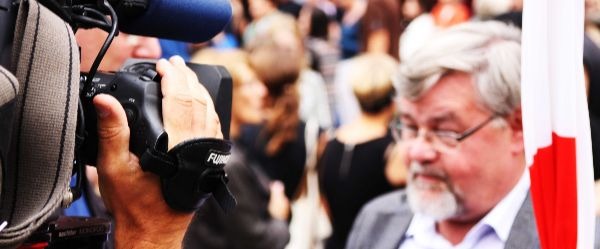Last April, the paper ‘Look Who’s Talking – An Analysis of Actors in Television News (2003-2016)’ was published by Kathleen Beckers and Peter Van Aelst. The paper sheds light on the shaping of news through the study of actors in the news. An enduring topic in Journalism Studies where little systematic knowledge exists upon.
We talk with Kathleen Beckers and Peter Van Aelst about the research they conducted and their findings. With the help of a new fourfold classification of actors in the news that they established, we gain more insight in the differences in actor prevalence over time, between broadcasters and issues. Time to learn more about who gets to speak in the news and the crucial role it plays in the shaping of news.
Could you briefly highlight the need of the analysis into this topic?
A large body of research already exists focusing on speaking actors in the news. However, most of these studies focused on one issue (for instance immigration) or studied a sample of news items. In our study, we analyzed all items from Flemish news broadcasts in the period 2003-2016. This way, we were able to compare the presence of different speaking actors between different issues and broadcasters in a much more systematic way.
What do you mean when you speak about an ‘actor in the news’?
In our study, an actor in the news means a person that is allowed to speak in the news broadcast. So just being mentioned is not enough to be considered an actor.
In the paper you mention ‘Who gets to speak in the news plays a crucial role in the shaping of the news’; why is that?
Actors that get to speak in the news are able to convey their point of view in their own words and this way can shape a news item and the interpretation of an issue. Often only a limited number of ‘elite’ actors are quoted in the news, and what they say may frame a news item in a specific way.
You speak of significant differences between actors that play in the news, what are these?
We find that especially citizens and politicians compete as most prominent speaking actors in the news. In general, there are more political and governmental actors at the public service broadcaster, and more ordinary citizens on the commercial broadcaster. However, over time the presence of these different types of actors is rather stable.
How do actors relate to news issues? What are your key findings?
Issues play an important role in explaining the actors that are likely to appear in the news. Large differences exist in the prevalence of specific actor between issues. In some issues (e.g. politics, economy, justice) political actors get to speak most often. However, in other issues, politicians only play a minor role and citizens play a central role (e.g. education, culture). Another example is for instance news on labor, where civil society organizations such as trade unions are among the most prevalent speakers in the news, whereas they only play a modest role in the news in general. When analyzing actors in the news, one should thus bear in mind that the issue plays a large role in the actors that get a voice.
Why is your new fourfold classification of high value?
Previous studies often did not agree on how to categorize the different actor types. We decided to make a new fourfold classification (fig.1.) as most previous studies used a classic elite-non-elite dichotomy. By including more actor categories, we have tried to resolve the existing problematic categorization of specific actor groups (such as civil society organizations). Moreover, using a classification with more categories helps to gain a more nuanced understanding of the actors that get to speak in the news.

Figure 1: Fourfold actor classification across issues
The type of broadcaster has a big influence on the types of actors that appear in the news. Why is that?
In Flanders, there are two main broadcasters with an evening newscast: public service broadcaster ‘Eén’ and commercial broadcaster ‘VTM’. We find that the public service broadcaster is more likely to hand the word to political & governmental actors, while the commercial broadcaster pays more attention to citizens. These differences might be explained partly by a different issue focus. The public service broadcaster pays more attention to rather “hard” news topics such as politics and economy, issues that typically include more political actors and less citizens. The commercial broadcaster, on the other hand, focuses more often on soft news topics such as crime and entertainment, which include more citizen sources.



